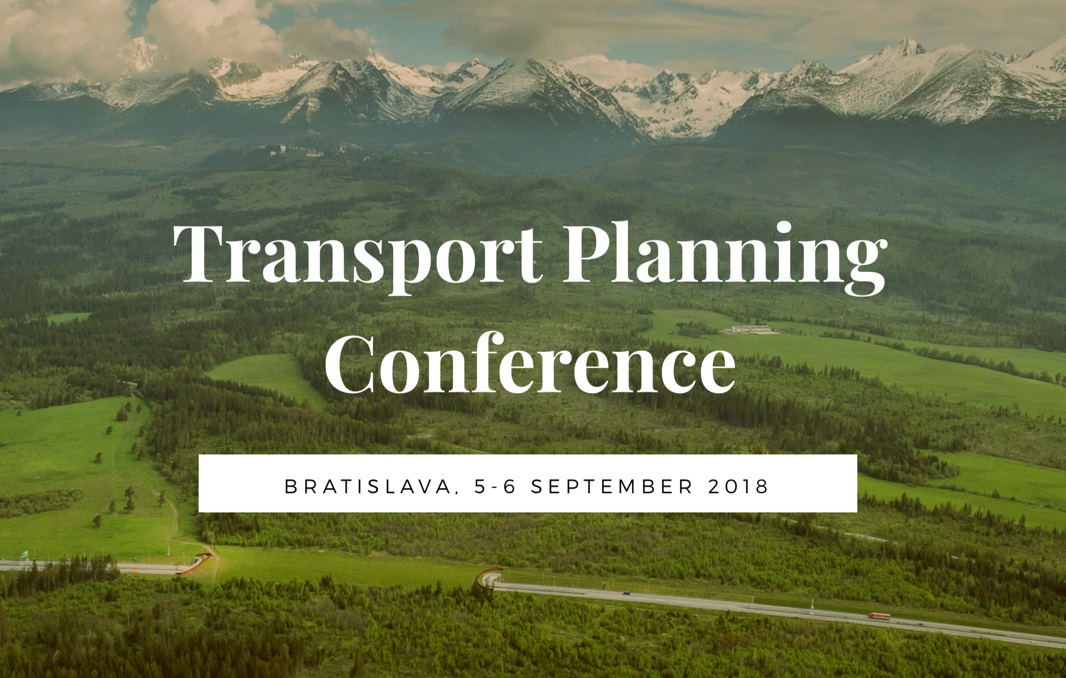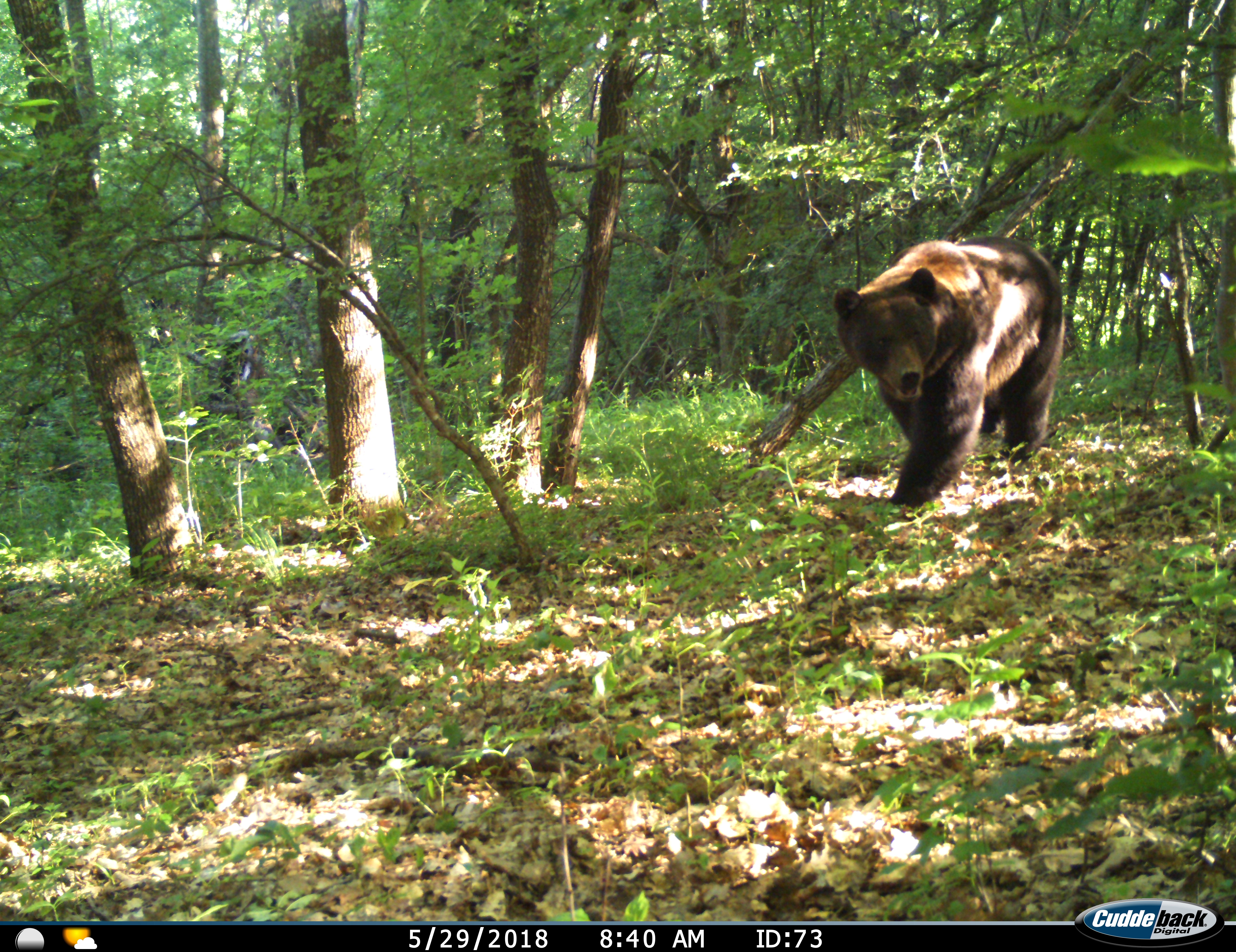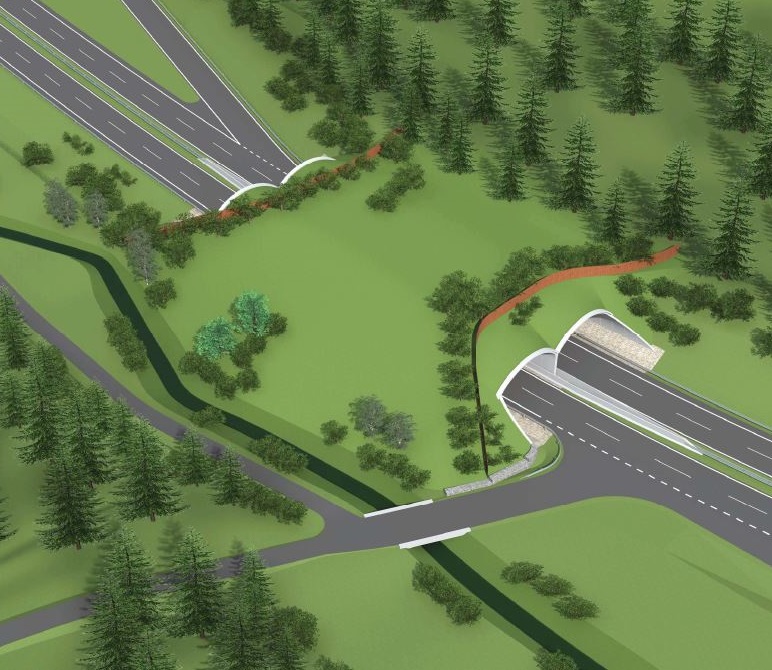|
|
| |
| |
 |
STEPS AHEAD FOR A BETTER CONNECTED CARPATHIAN REGION
|
| |
|
The end of the year is a good time to look back at the steps taken towards connectivity in the Carpathians in 2018. And to look forward for continuing and deepening the work towards a region where both people and wildlife can move freely.
Since August 2018 multiple bear deaths on Romania's highways have brought the topic of connectivity in the public attention. Both people and authorities are demanding efficient solutions for connectivity. And the TRANSGREEN project was there to offer expertise and customized solutions on several levels: field data, adapted technical solutions and recommendations for a policy framework.
This autumn the TRANSGREEN project pushed forth on the long and sometimes heavy road towards a better connected Carpathian region with:
- advances in sustainable transport policies, to be further refined and hoped to be adopted in 2019.
- local experts from pilot areas trained in Environmental Impact Assessment (EIA) give positive feedback and get active.
- valuable research findings of wildlife hotspots in the pilot areas and tailor-made recommendations. Some of which have supported an ongoing process towards concrete solutions, such as a project for a new green bridge in the Czech part of the Beskydy area.
- support for increasing the visibility and the weight of the connectivity topic on the public agenda, as well as among decision-makers and experts.
And this TRANSGREEN animated video is a catchy way to summarize the complex discussion on the topic of connected Carpathians.
|
|
| |
 |
BIG EVENTS TO SUPPORT POLICY on SUSTAINABLE TRANSPORT Planning
|
| |
 |
| |
|
On 5-6 September, in Bratislava, Slovak Republic, the TRANSGREEN Transport Planning Conference brought together over 80 complementary actors who contributed to drafting the Action plan for the Carpathian Convention, a piece of legislation meant to harmonize regulations across the region.
In Eindhoven, the Netherlands, on September 11-14, Carpathian connectivity was brought in focus by the TRANSGREEN team at prestigious Road Ecology event: IENE 2018 conference.
On October 22-24 took place the European Road Conference (ERC) and 1st Road Safety Conference (RADAR) in Dubrovnik, Croatia, hallmarked by International Road Federation (IRF) as main organizer. TRANSGREEN project was present at the conference in order to raise awareness on the importance of taking nature into account when planning roads.
TRANSGREEN was present at COP 14 - Fourteenth meeting of the Conference of the Parties to the Convention on Biological Diversity in Sharm El-Sheikh, Egypt, 17 - 29 November 2018. Here is the presentation delivered by Mr. Ján Kadlečík, from the State Nature Conservancy of the Slovak Republic.
“The Danube Region Transport Days 2018” brought together, on December 4 - 5 in Ljubljana, Slovenia, the transport community to exchange on aspects of transport in the Danube macro-region. Besides updates about TRANSGREEN the audience also received an invitation to play a custom-made board-game that stirred meaningful conversations regarding integrated transport planning. Read more about this atypical session here.
|
|
| |
 |
News FROM Tirgu-mUres - Iasi Pilot area.
Stage of The Infrastructure project: Early planning
|
| |
 |
|
As the Tirgu Mures-Iasi highway is still in its early planning stage, the timing is ideal to introduce sustainable measures for connectivity in the project. To this end, it is important for experts and stakeholders to share a similar language and vision regarding integrated infrastructure planning that takes nature into account.
This was one the goal of the 26-27 November 2018 training on Environmental Impact Assessment organized by Milvus Group in the pilot area for representatives of the Ministry of Transport, the National Railway Company, the environmental authorities, NGOs, as well as the experts. Find out more about the event and the audience reactions here.
For full updates, read the Tirgu-Mures-Iasi pilot area factsheet.
|
|
| |
 |
News from Miskolc-Košice-Uzhgorod Pilot area.
Stage of the Infrastructure project: Planning
|
| |
 |
|
The Miskolc-Kosice-Uzhgorod motorway network connects three countries, each of which is found in a different stage of development of the infrastructure project. The three states need to coordinate their efforts to ensure connectivity for wildlife, because in terms of landscape the area is one entity.
In TRANSGREEN partners from each country analyzed gaps of knowledge, in order to be able to preapre a complete picture of the area and to support further activities in a coordinated manner. As a result, a list of recommendations to fill in the gaps is being developed.
Read more about these developments in the Miskolc-Kosice-Uzhgorod pilot area factsheet.
|
|
| |
 |
News FROM ARAD-DEVA PILOT AREA.
Stage of the Infrastructure project: Construction
|
| |
 |
|
The Arad-Deva pilot area risks being subject to a double barrier for wildlife movement, because an additional infrastructure development is under way (an upgrade of the railway tracks) besides the construction of the motorway, which is in an advanced stage. TRANSGREEN project helped generate a more detailed mapping of the area in order to identify and assess the functionality of movement routes of large mammals.
As a result, concrete measures to ensure functional permeability are being proposed for discussion with relevant stakeholders as Railway Company, Construction companies and their contracted environment specialists.
For a full picture about this special case of a double barrier, read the Arad-Deva pilot area factsheet.
|
|
| |
 |
News from the Beskydy pilot area.
Stage of the Infrastructure project: Operation, Monitoring & maintenance
|
| |
 |
|
The importance of the Beskydy pilot area as a hotspot for the migration of bears was confirmed by field research. In order for the landscape to remain permeable for large carnivores, the construction of two ecoducts (one at each side of the CZ-SK state border) was proposed. Project TRANSGREEN contributed to continuation of long-term efforts of many stakeholders involved in the protection of this area, from NGOs, Public Administrations to the relevant Ministries.
As a result, the Czech Road and Motorway Directorate (ŘSD) developed a plan (see picture) for the proposed ecoduct and proposed it for consultation in July 2018. On the Slovak side, there are advanced discussions for building D3 Svrčinovec ecoduct.
Find out more about the Beskydy experience from the Beskydy pilot area factsheet.
|
|
| |
 |
TRANSGREEN knowhow to support newly launched project: ConnectGreen
|
| |
 |
|
On November 20th, in Bucharest, the ConnectGREEN project was launched, expanding the connectivity work started by TRANSGREEN. While TRANSGREEN zooms in to sustainable transport infrastructure planning, ConnectGREEN focuses on landuse and spatial planning. ConnectGREEN aims at ensuring habitat connectivity for large carnivores in the Carpathians by harmonizing the interests of nature conservation with different land uses.
With similar approaches but different scopes, ConnectGREEN benefits from the expertise and first steps taken by TRANSGREEN both in terms of methodology but also technical developments and connections to key stakeholders.
More about the new project on ConnectGREEN.
|
|
| |
 |
Happy new year TO ALL TRANSGREEN partners, collaborators and Supporters!
|
| |
|
|
|
|
| |
|
If you have received this newsletter, you have been included on one or more of the Danube Transnational Programme/projects postal mailing lists. We are committed to respect and protect the privacy of personal data collected. We regard your personal data as confidential information and will never communicate it to third parties. Your personal data are used mainly for the express purpose of receiving the newsletter. Your mailing details may also be used by the DTP and its projects for information and dissemination purposes strictly related to the programme and its projects. If you prefer not to receive more of this newsletter and your data not to be used for dissemination purposes, you can unsubscribe by sending a reply email.
|
|
|
|
|
|
